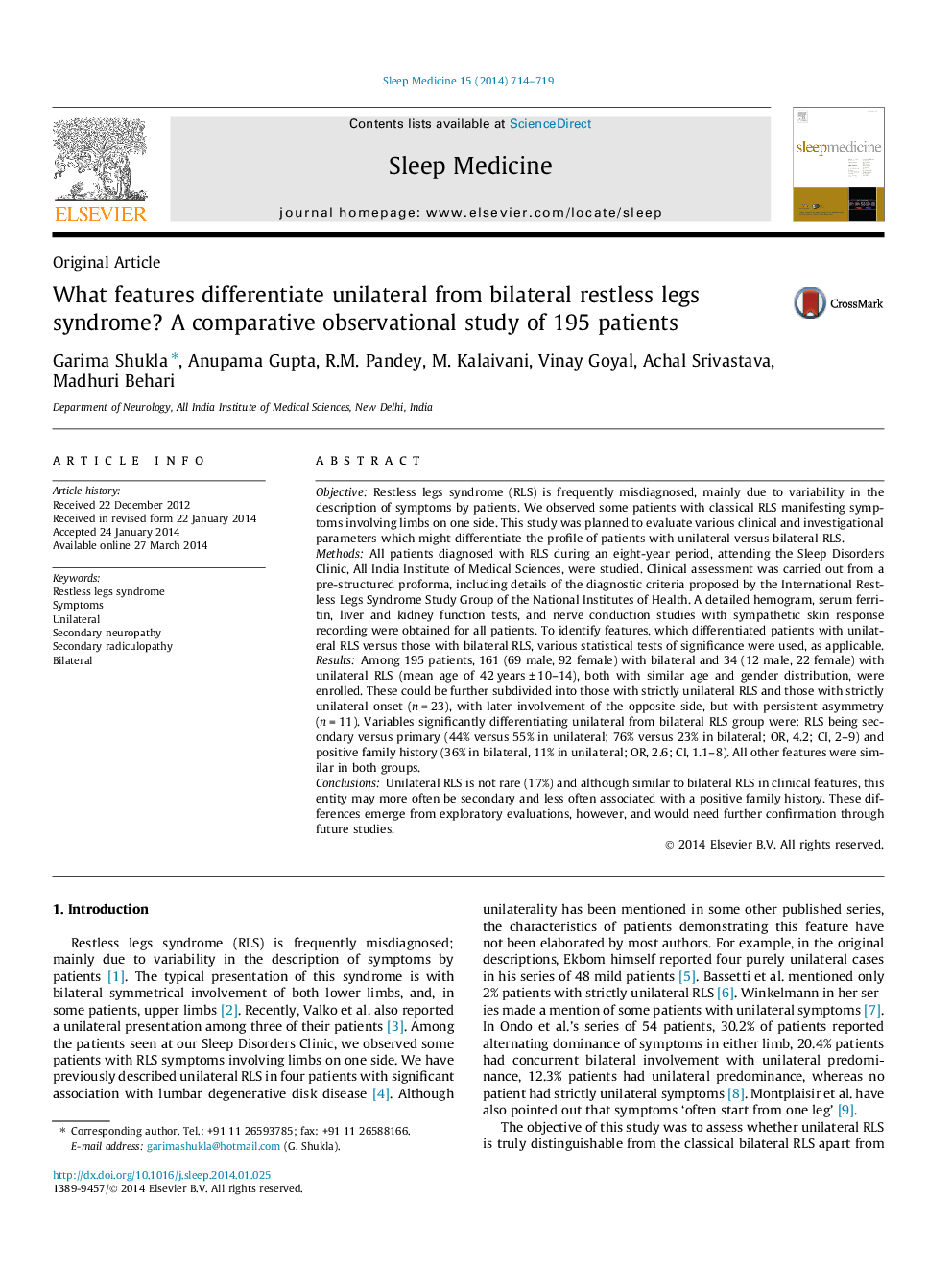| کد مقاله | کد نشریه | سال انتشار | مقاله انگلیسی | نسخه تمام متن |
|---|---|---|---|---|
| 3176129 | 1200247 | 2014 | 6 صفحه PDF | دانلود رایگان |
ObjectiveRestless legs syndrome (RLS) is frequently misdiagnosed, mainly due to variability in the description of symptoms by patients. We observed some patients with classical RLS manifesting symptoms involving limbs on one side. This study was planned to evaluate various clinical and investigational parameters which might differentiate the profile of patients with unilateral versus bilateral RLS.MethodsAll patients diagnosed with RLS during an eight-year period, attending the Sleep Disorders Clinic, All India Institute of Medical Sciences, were studied. Clinical assessment was carried out from a pre-structured proforma, including details of the diagnostic criteria proposed by the International Restless Legs Syndrome Study Group of the National Institutes of Health. A detailed hemogram, serum ferritin, liver and kidney function tests, and nerve conduction studies with sympathetic skin response recording were obtained for all patients. To identify features, which differentiated patients with unilateral RLS versus those with bilateral RLS, various statistical tests of significance were used, as applicable.ResultsAmong 195 patients, 161 (69 male, 92 female) with bilateral and 34 (12 male, 22 female) with unilateral RLS (mean age of 42 years ± 10–14), both with similar age and gender distribution, were enrolled. These could be further subdivided into those with strictly unilateral RLS and those with strictly unilateral onset (n = 23), with later involvement of the opposite side, but with persistent asymmetry (n = 11). Variables significantly differentiating unilateral from bilateral RLS group were: RLS being secondary versus primary (44% versus 55% in unilateral; 76% versus 23% in bilateral; OR, 4.2; CI, 2–9) and positive family history (36% in bilateral, 11% in unilateral; OR, 2.6; CI, 1.1–8). All other features were similar in both groups.ConclusionsUnilateral RLS is not rare (17%) and although similar to bilateral RLS in clinical features, this entity may more often be secondary and less often associated with a positive family history. These differences emerge from exploratory evaluations, however, and would need further confirmation through future studies.
Journal: Sleep Medicine - Volume 15, Issue 6, June 2014, Pages 714–719
